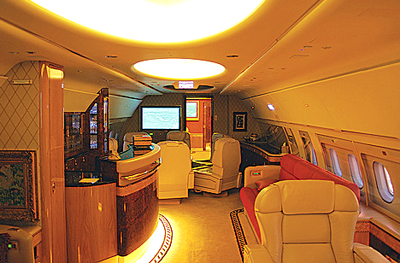General Aviation : Forging a Symbiosis

As airlines grow, so will general aviation. The growth, it goes without saying, will not be painless. Besides fuel prices, inherent competition will temper the process of general aviation expanding.
In about two years from now, Delhi’s Indira Gandhi International Airport (IGIA) will have India’s first dedicated terminal for general aviation. Once ready, the facility will meet a longstanding demand of corporate houses to have private airports, or at least separate terminals for business travellers, especially in the busy airports at metros. Delhi International Airport Limited recently invited Expression of Interest applications from Fixed Base Operators (FBOs) worldwide to build and operate dedicated facilities at IGIA. The special terminal is scheduled to come up adjacent to the existing domestic airport or at IGIA’s International Terminal 2 that was originally to have been de-commissioned after the integrated Terminal 3 gets operational by March 2010. The FBO would provide services at both the terminals (special lounges and conferencing facilities, apart from other amenities like rental cars, charters, catering and hotel reservations) and on the airside (handling services, aircraft fuelling, parking and hangar services).
Demand from the general aviation clientele is genuine and in conformity with the pace at which general aviation should, and is, progressing in the country. The discerning air traveler would have noticed the manner in which our airports, especially the metro airports, are increasingly getting uncomfortably crowded. This, despite the new terminals that are bigger and better equipped to manage passenger traffic, imbibing the large airports in the US and Europe. Evidently, the disturbing rise in crude oil prices has not brought to a crawl the boom in scheduled passenger services. Indeed, even if government policies do not provide the much sought after relief to the airlines in terms of Aviation Turbine Fuel price rationalisation, and passenger fares rise significantly as a result, the demand for air travel is unlikely to peter out to a trickle. On this account, the alarmists may be surprised by the resilience shown to hikes in air fares by the passenger who is willing to shell out more for the simple reason that he has got used to air travel. Man, after all, is a creature of habit. However, scheduled passenger services are not all that aviation is about. Closer inspection throws up interesting developments that draw attention to the interplay between scheduled air services and general aviation.
Simply put, national aviation could be seen as made up of military and civil aviation. The latter is dealt with by the Ministry of Civil Aviation (MoCA) at the Centre even as the Directorate General of Civil Aviation is the regulatory authority overseeing all civil aviation activity. Civil aviation can be broadly categorised under two divisions. Scheduled operations are carried out by passenger and cargo carriers who fly on DGCA approved schedules, on DGCA approved routes; the operators are generally referred to as airlines or carriers. The rest of civil aviation is made up of private aviation and commercial aviation. Private aviation could be private aircraft operations (owned by business houses, individuals, companies and so on). On the other hand, commercial non-scheduled operations include air charter services, air taxi services, air ambulance, spraying of crops and so on. Fractionally owned aircraft lie in the penumbral region between private and commercial aviation. Also, these days business houses are exploiting idle flying effort available on captive aircraft by hiring them out on charter.
Coming back to what constitutes general aviation, according to ICAO, it is an aircraft operation other than a commercial air transport operation or an aerial work operation. Aerial work, in this context is specialised commercial operations. In practice, however, general aviation encompasses all civil aviation activity apart from that carried out by commercial airline operations. Distinguishing between non-scheduled air transport operations and other sub-parts of general aviation can be difficult. In some cases, the same aircraft could be used for non-scheduled air transport as well as private flying. Thus, general aviation signifies neither scheduled airliner nor military flying. It includes aviation activity related to business, agriculture, pilot training, medical services, search and rescue, promotion, commercial, law enforcement, recreation, flying display, disaster relief and official communication ( ferrying important personages on government assignments). From the macro point of view, general aviation complements national aviation enterprise as a determinant of national economy, all of its sub-sets contributing to increased economic activity in one way or another. Interestingly, in terms of aviation activity globally, general aviation is bigger than scheduled airline operations.
Safety First
One area of concern about general aviation is: where does general aviation meet scheduled air operations in terms of minimum safety and efficiency standards? Annex 6 to the Convention on International Civil Aviation deals with operation of aircraft and aims at standardising operations so as to ensure highest levels of safety and efficiency. Part I of Annex 6 is based on recommendations of States attending the first session of the Operations Divisional Meeting held n 1946 while Part II came into being in September 1969 and deals exclusively with general aviation. (Part III came into being in 1986 and deals with helicopter operations.) These have been constantly modified over the years to accommodate new requirements introduced by technological or commercial imperatives. While the objectives of Annex 6 are basically aimed at international aviation, that is, flights crossing at least one international border, the essential principles enshrined therein lay the guidelines for general aviation.





